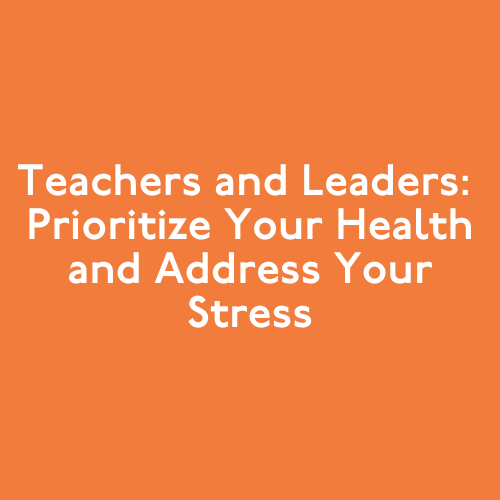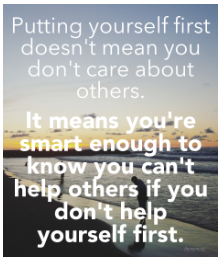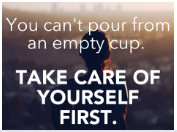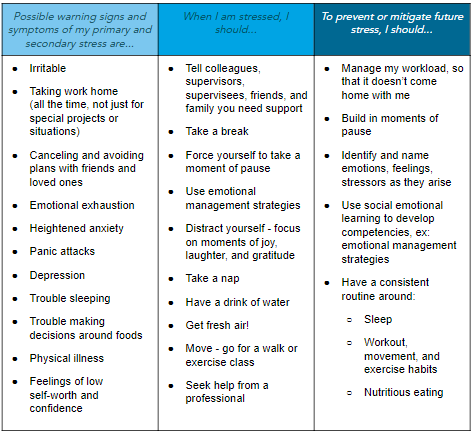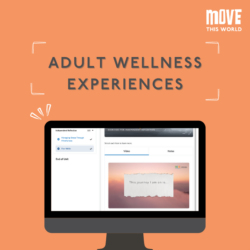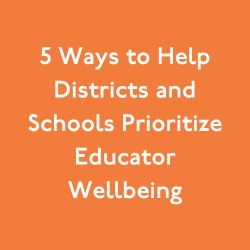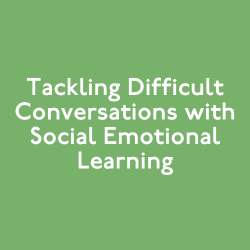Picture your ideal, perfect day. Where are you? Who are you with? What are you doing – or perhaps not doing? How do you feel? Happy? Calm?
Credit: Unknown
I bet your ideal, perfect day did not include negative mood and thinking, headaches, brain fog, anxiety, and other possible warning signs or symptoms of primary or secondary traumatic stress. Dealing with stress, while stressed, is difficult – if not impossible – especially without a plan. However, sustainable change related to stress and stressful environments is attainable.
You must address your own self-care and wellbeing in order to best support others and impact change. Addressing our own wellness happens through guided self-reflection, action planning, and dialogue. Understanding your stress warning signs, and creating a plan to put in place to prevent and address stress, will positively impact your ability to:
-
Prevent or mitigate future potential stress.
-
Handle and respond to stress.
-
Effectively teach, lead, and be part of a positive, supportive community.
-
Set and be a positive example for students and other community members.
What are the warnings signs I’m stressed?
Warning signs and impact of primary and secondary traumatic stress will vary from person to person. The Health Journals has a poster for compassion fatigue. Print this out and share with your colleagues. Also, look at the list of the warning signs listed in the chart below. How many of the warning signs outlined can you relate to? What’s missing? Complete a list for yourself. You might need to ask for input from friends, family, colleagues, and others for insight on the ways they see you change when you are experiencing stress.
What can I do when I’m experiencing stress?
Credit: Unknown
There are many self-care strategies you can use in the moment while experiencing primary and secondary traumatic stress. Some of these self-care strategies will simply alleviate symptoms of stress you are experiencing, while others can help you move forward and address the root cause. A list of self-care strategies you can implement while feeling stressed are in the chart below (middle column). However, you need to make a list for yourself. For example, some people are capable of acknowledging when they are stressed and asking for help, while others are not or would not do this. Make a list of strategies you can refer to for support when you are experiencing primary and secondary traumatic stress.
How can I prevent stress?
Stress is unavoidable, but there are ways you can make positive changes. First of all, know yourself – what are your primary and secondary traumatic stress triggers? What type of primary and secondary traumatic stress are you exposed to on a regular basis, have been exposed to in the past, and could be exposed to in the future?
Taking an inventory of potential stressors can help you make systemic life changes to prevent future stressors. As an educator, for example, we cannot prevent the secondary traumatic stress we gather through our student relationships. However, a self-care routine will help prepare us for handing this secondary traumatic stress, and hopefully, keep the impact on ourselves at a minimum. Make a list of current self-care routines and strategies you have, then see what else you can add. (See column three of the chart below.) Don’t have a self-care routine? Check out these 21 ways to practice self-care right now.
The chart below will walk you through an easy three-step process to help you identify a self-care routine. You’ll evaluate and identify the following:
-
Your warning signs of primary and secondary stress,
-
Self-care strategies you can use in a stressful moment, and
-
Self-care strategies you can build-in to prevent future stress.
Step 1. Fill-out the three columns to match what is true for you; use examples below for a point of reference.
Step 2. Print the chart to keep holding yourself accountable and consistent related to your self-care routine and strategies.
Step 3. Share your completed self-care chart with colleagues, friends, roommates, and any one part of your support network. These are integral conversations to inform your support network of the strategies you need to prevent and respond to stress. You should help each other be accountable, consistent, motivated related to stress, and self-care strategies.
Sign up for Move This World’s newsletter to stay up to date on social-emotional learning.
Enter your email below
